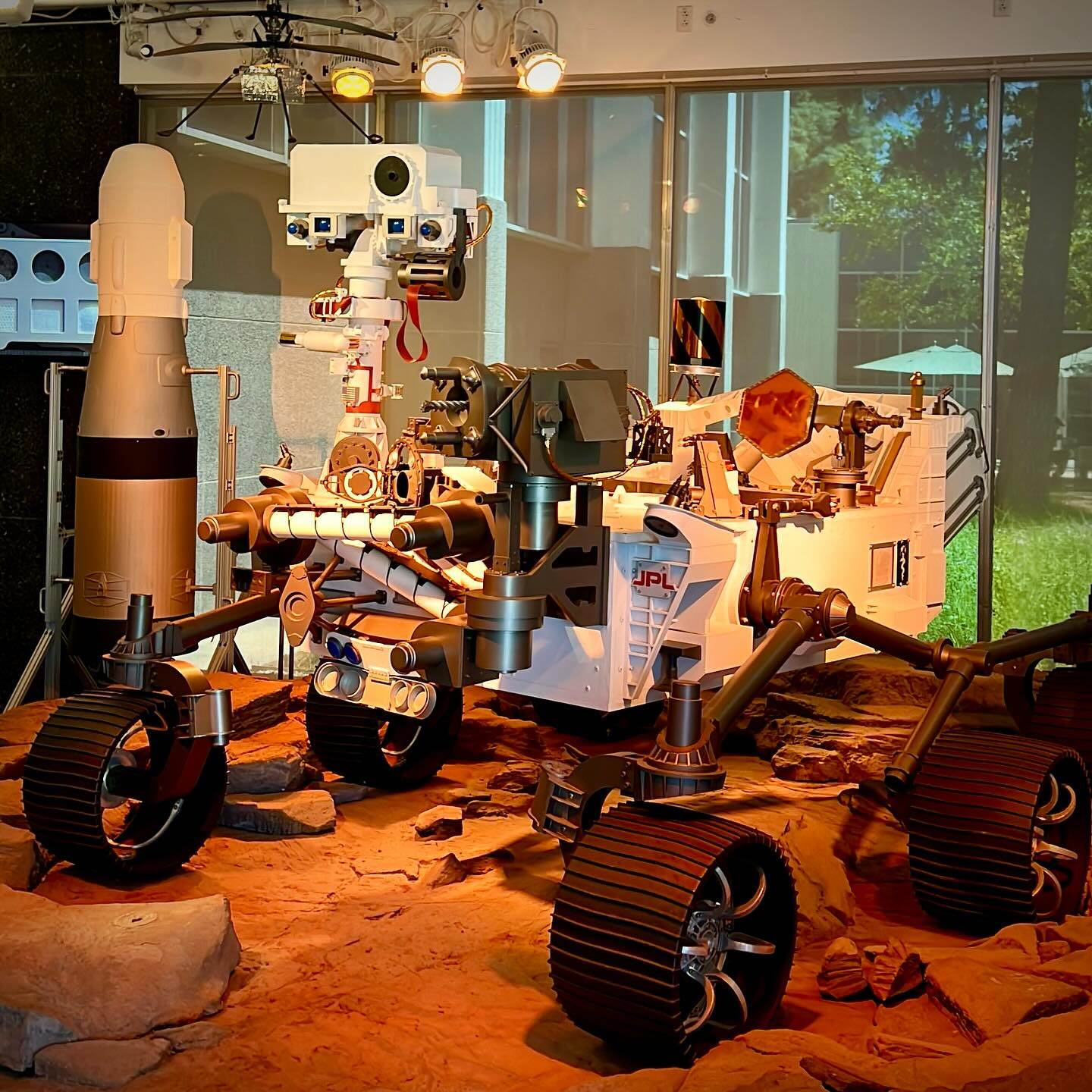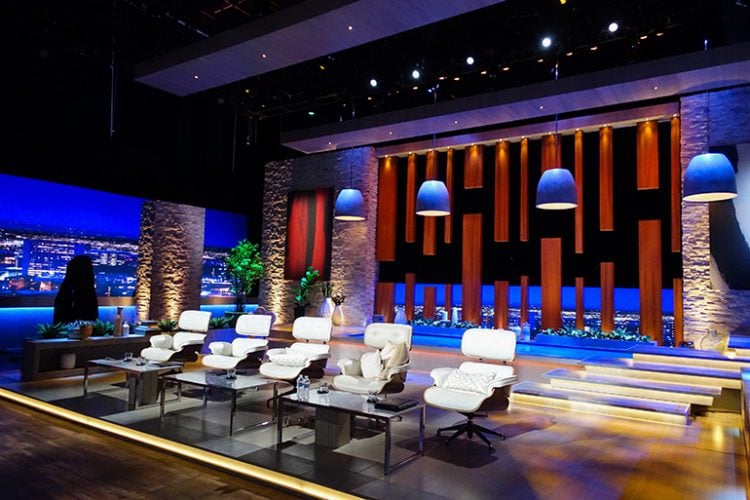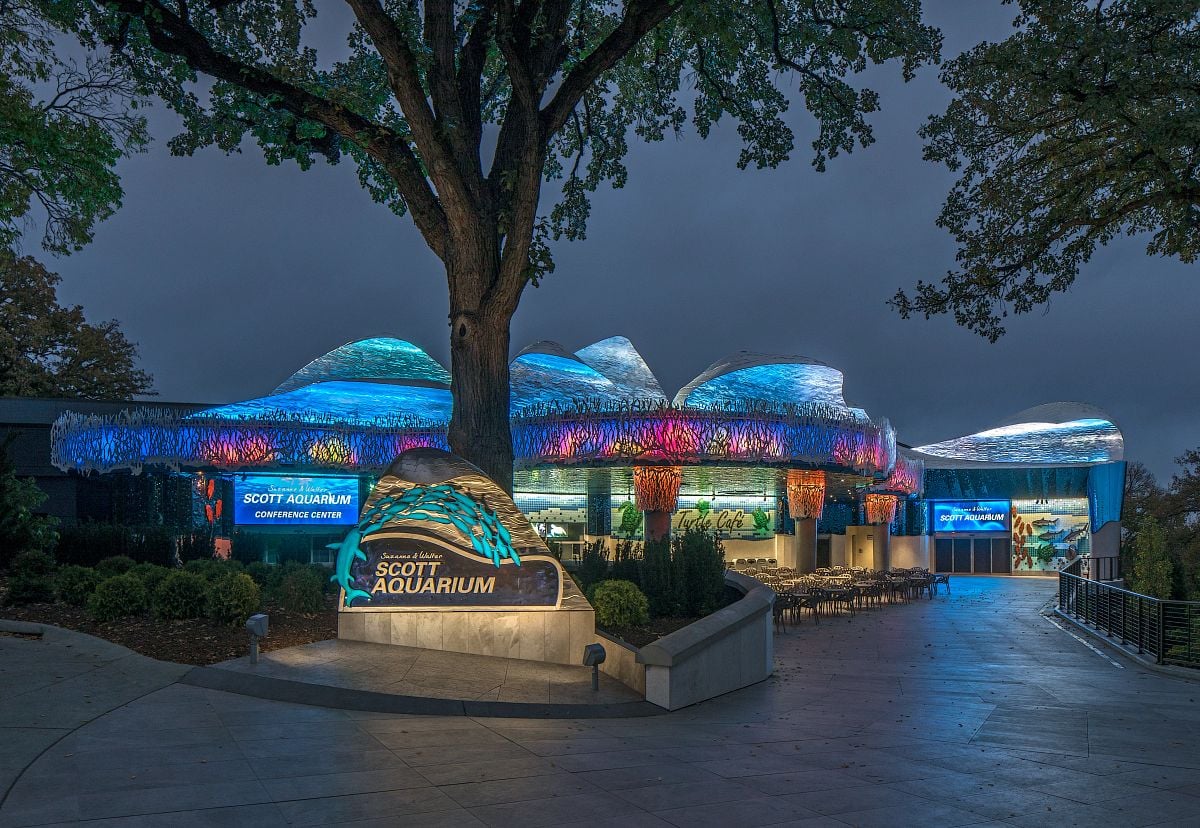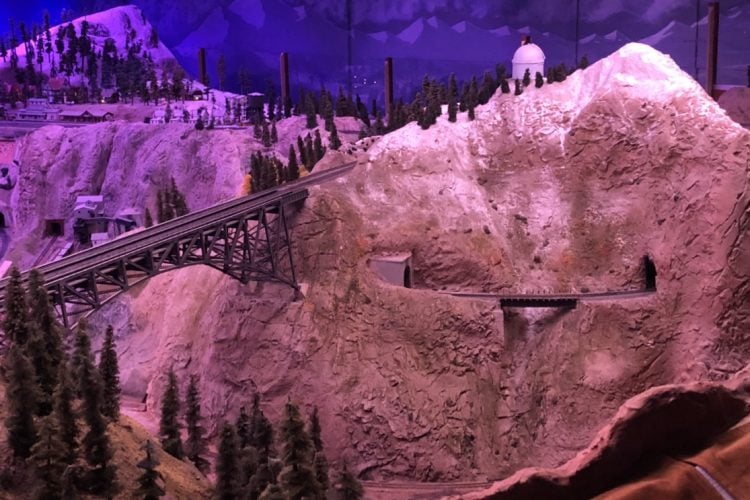There is much we don’t know about Mars but thanks to a creative design team, we have a good idea what a Mars rover looks like on the Red Planet. Luckily you don’t have to make the 140-million-mile journey, (roughly 40 years by car at 100 MPH if you could drive). Using an ETC Unison Mosaic system, Kinetic Lighting, Designer Kirsten Opstad, and Programmer Scott Baier of MPA created an ingenious display showing what a rover looks like in real life, in real time, for the Mars Rover Exhibit at NASA’S Jet Propulsion Laboratory in Pasadena, California.
The Pre-Launch
When designer Kirsten Opstad was brought onboard, her first call was to Laura Green at Kinetic Lighting who, building on their six-year relationship, worked out the design elements and fixture choices. As Director of System Sales and Installations Green has seen her share of challenging installations. “It was a really fun project to work on – so different from our other jobs,” says Green. The challenge was to show the public what the rover was seeing on Mars. Lighting designer Kirsten Opstad used a blend of ETC Desire D40 PARs and Irideon FPZ fixtures to create the diffused looks of the red planet.
Liftoff
The challenge then became how to track the correct light at the correct time. “Creating the look of sunrises and sunsets on Mars involved some high-level Mosaic programming,” says Green.
Scott Baier of Los Angeles-based MPA, the local ETC rep company, is quick to point out that ETC currently has no customers on Mars, and therefore no existing points of reference. “We had to work on an algorithm that converted Martian time to a trigger that Mosaic could understand,” explains Baier. “Luckily, I had a friend who is a nuclear astrophysicist and he helped me create those triggers.” To make things more complex, programming had to take account of the rover’s different daily locations and the separate time zones of Mars. “We started by determining the rover’s location and knowing that in its lifetime it’s not going to travel outside of a time zone, so were able to send that information to ETC Mosaic,” says Baier.
This project pushed the boundaries within the triggering features of Mosaic, using the API’s LUA logic to create transitions. “Being in the actual mission control room at JPL was a definite bonus. It was a huge privilege to get a glimpse inside that world that most people never see,” says Baier.
Baier and Opstad were then able to build the general looks from JPL photographs. “Mars is affected by sandstorms and the atmosphere can be very dusty, all of which affects the looks we are trying to create – I learned more about Mars than I ever thought I would,” laughs Baier.
In addition to the looks that change based on time of day, Baier programmed several presets to suit the exhibit: a standard daytime, a step-and-repeat look for guests that want their Instagram moment, and some sunrises and sunsets. All of these looks required factoring in color temperature from the daylight streaming through the windows of the exhibit. He is curious to compare the actual photographs coming back from the planet with the looks created by Mosaic.
And who knows? Maybe one day those photographs will include ETC lights on the faces of people on Mars.





